Embark on a tactical journey as we delve into the intricate strategies employed by Girona under the guidance of coach Michel. Girona has become one of Europe’s most overachieving clubs this season, currently topping the Spanish league table(Jan 18 – 2024). This comprehensive analysis will unravel the team’s formations, player movements, principles, and the strategic brilliance that defines Michel and Girona’s football philosophy.
Build-up
Low Build-up
In the low build-up, Girona uses a 4-3-1-3 formation with the goalkeeper playing as a center-back and a diamond midfield. They have two wingers high and wide and a striker pinning the center-backs to create space for the number-ten. Building with seven players often results in them having a numerical superiority in their low build-up phase. This allows them to play through the press and progress further up the pitch.
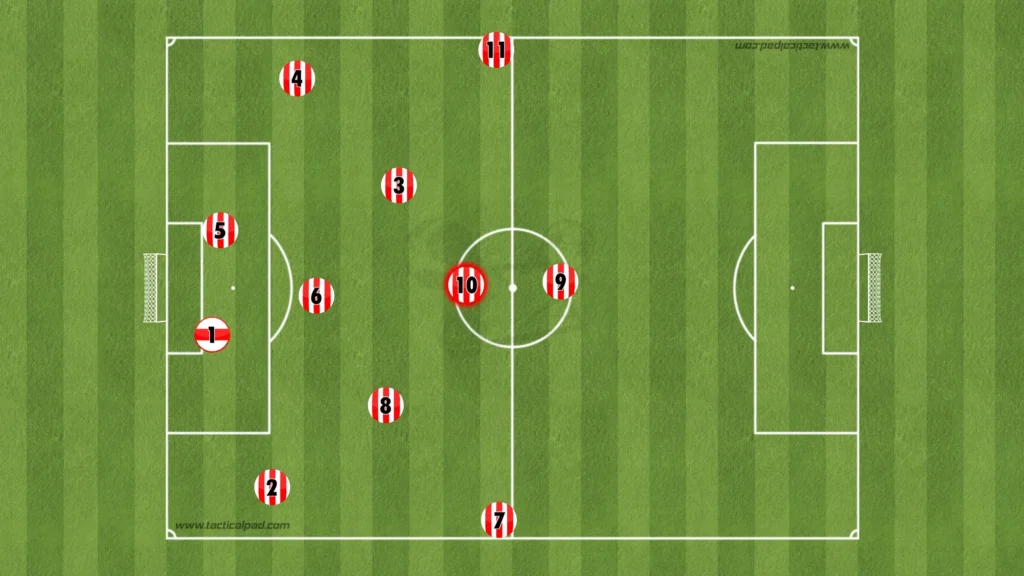
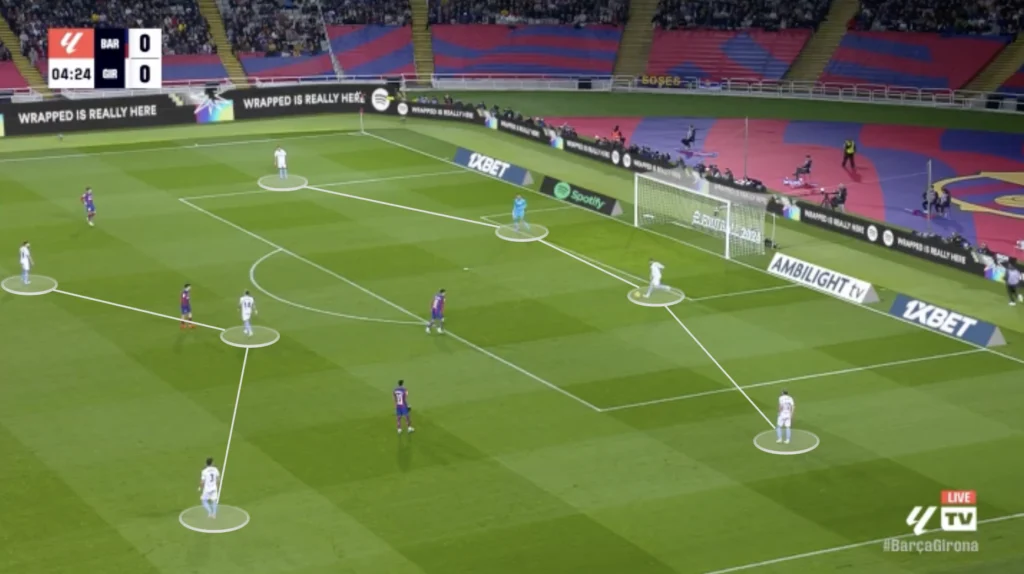
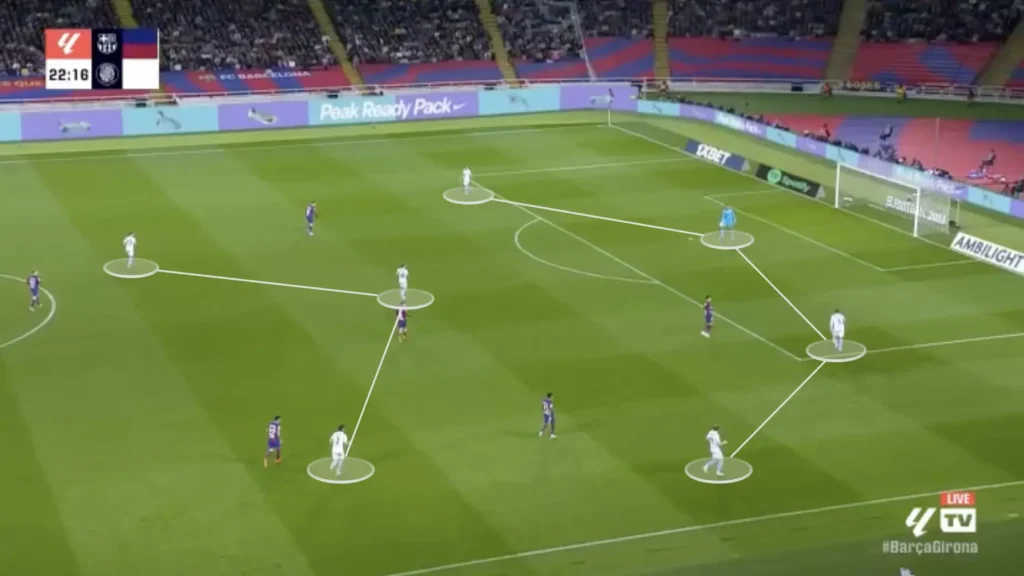
High Build-up
In the high build-up, Michel changes the formation to a 1-3-1-5-1, often inverting with the left-back:
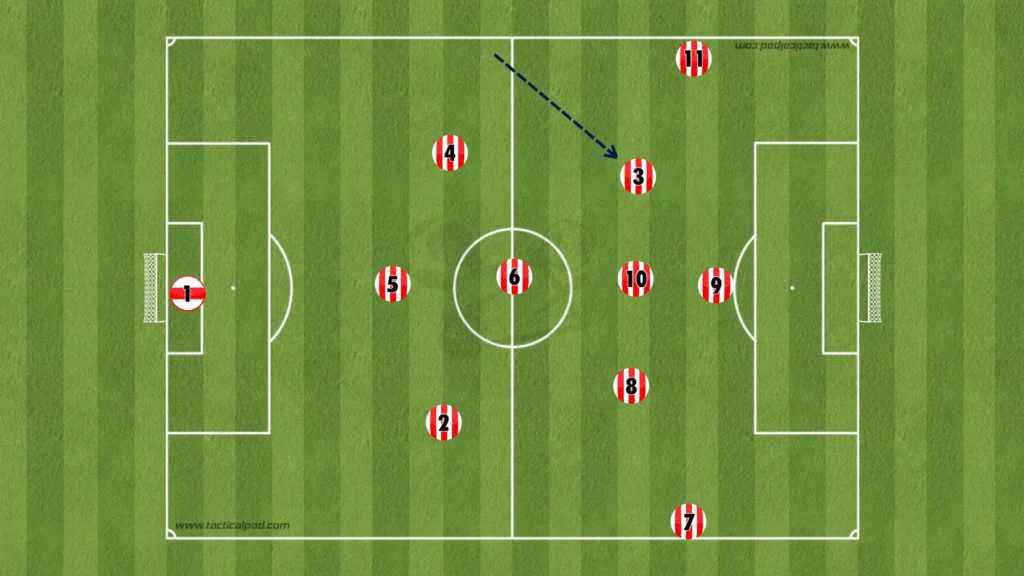
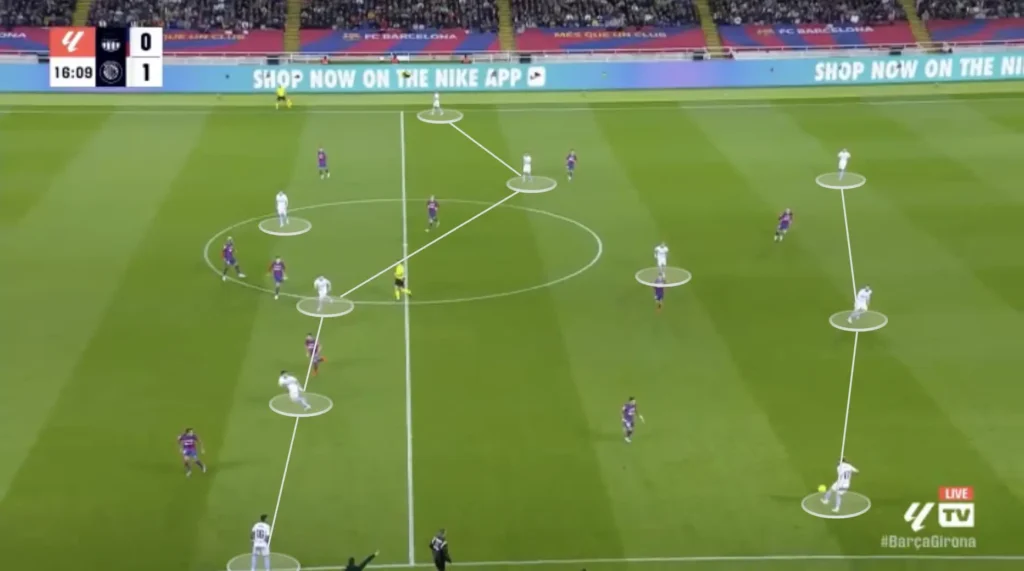
The high build-up is perhaps Girona’s greatest asset, being one of the highest-scoring teams in Europe this season. Michel likes having only one wide player in the high build-up. This is because he prioritizes playing through the middle. He needs one player high and wide to pull apart the backline. The rest of the players create numerical advantages in the midfield areas, making it easier to find passing combinations. Keeping most players centrally also shortens the length of the passes. This naturally shortens the time between passes, giving the opposition players less time to push up and press. This helps Girona be a possession-based team and allows them to slowly break down the opposition’s defense.
Final Third
Girona is also an excellent team in the final third. They will always create loads of chances and do so mainly by attacking space between the opposition center-back and fullback.
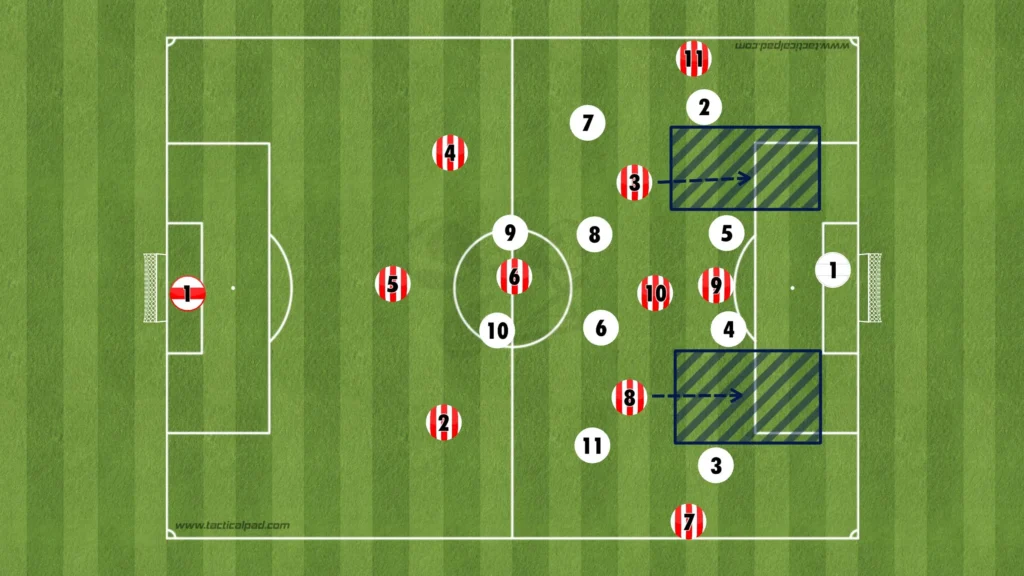
One way they do this is by using an underlap. Girona will often, through their possession, find space for their wingers after a switching play with a long ball. The winger will then attack his fullback, waiting for the run from the number-eight.
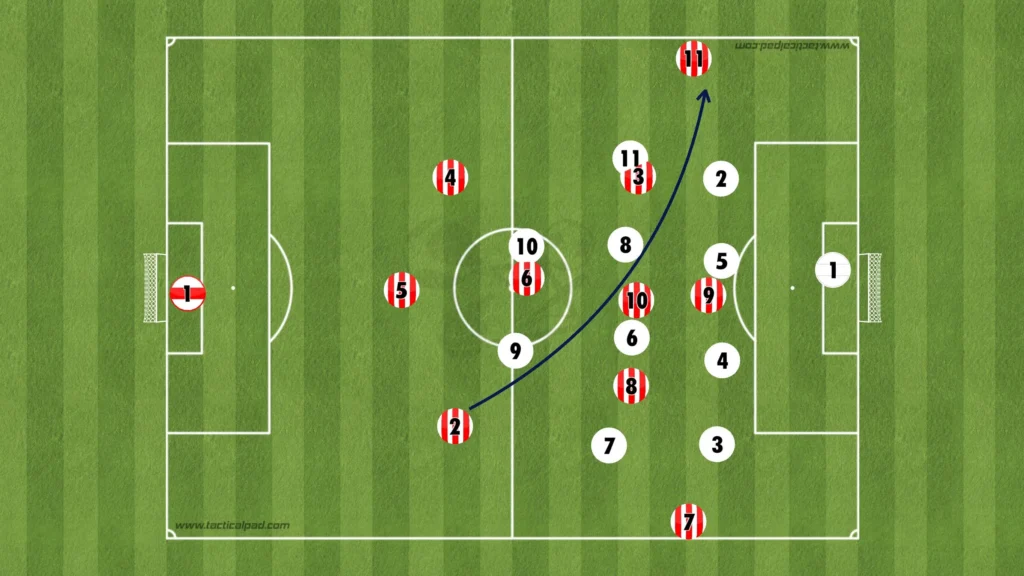
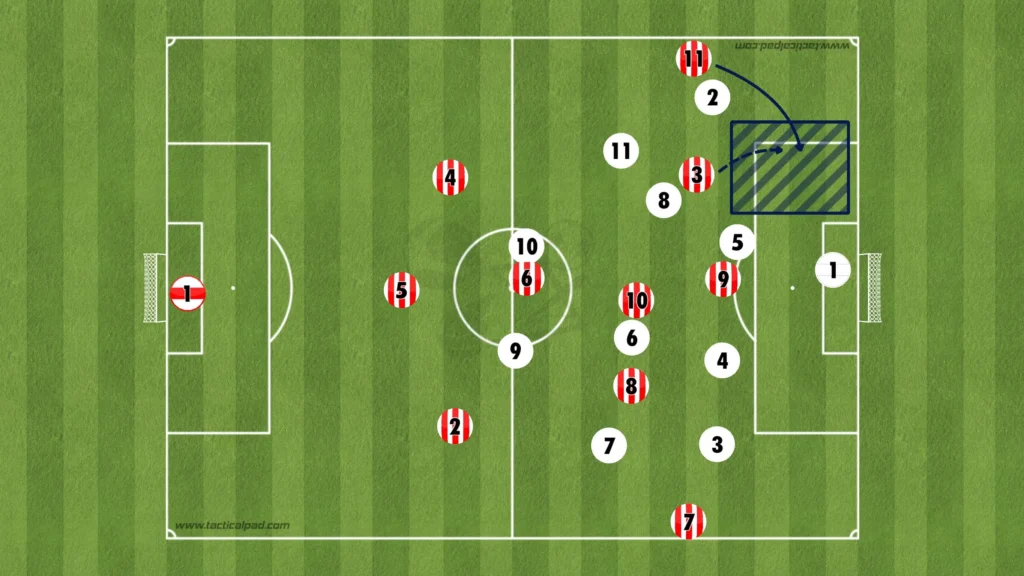

The defending midfielder who is responsible for the number-eight often struggles to track the run, which forces the center-back to make a decision. If he goes to track the run, he leaves a massive space in the box for the striker to exploit. Therefore, many center-backs will stay in the center, allowing the winger to play the ball into the open space to the free number-eight.
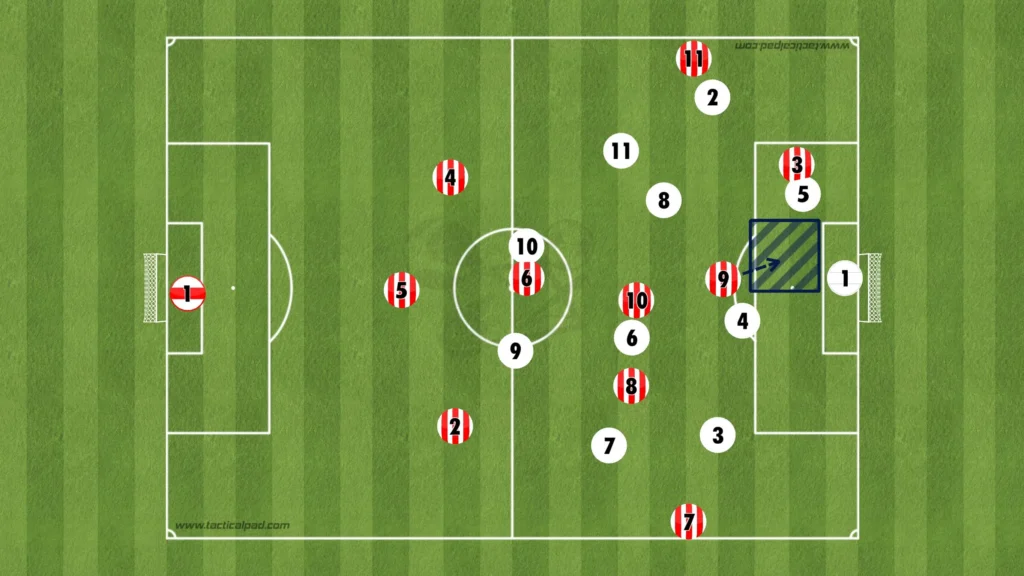
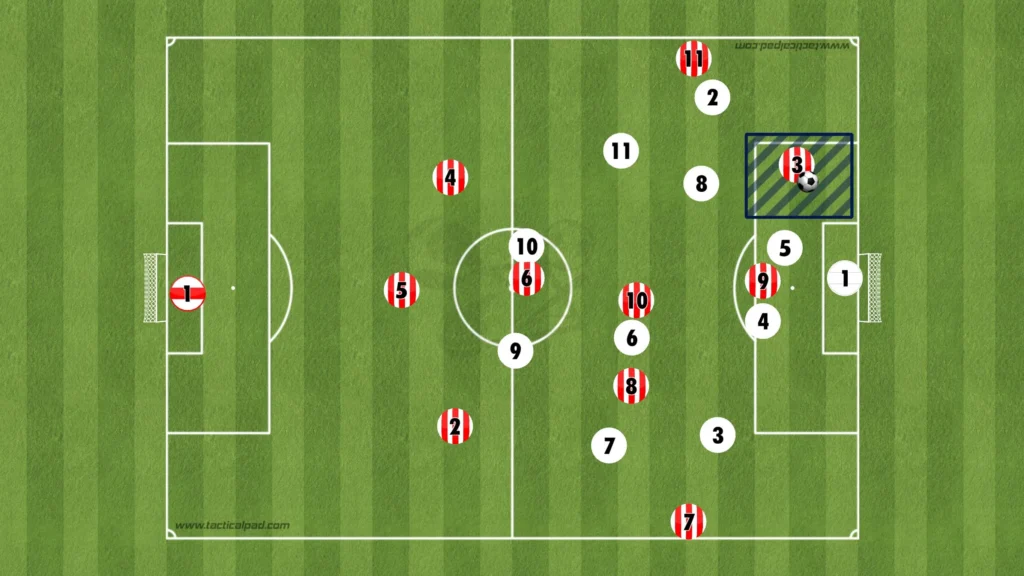
Girona also exploit the space between the center-back and the fullback by playing through-balls from the midfield or backline.
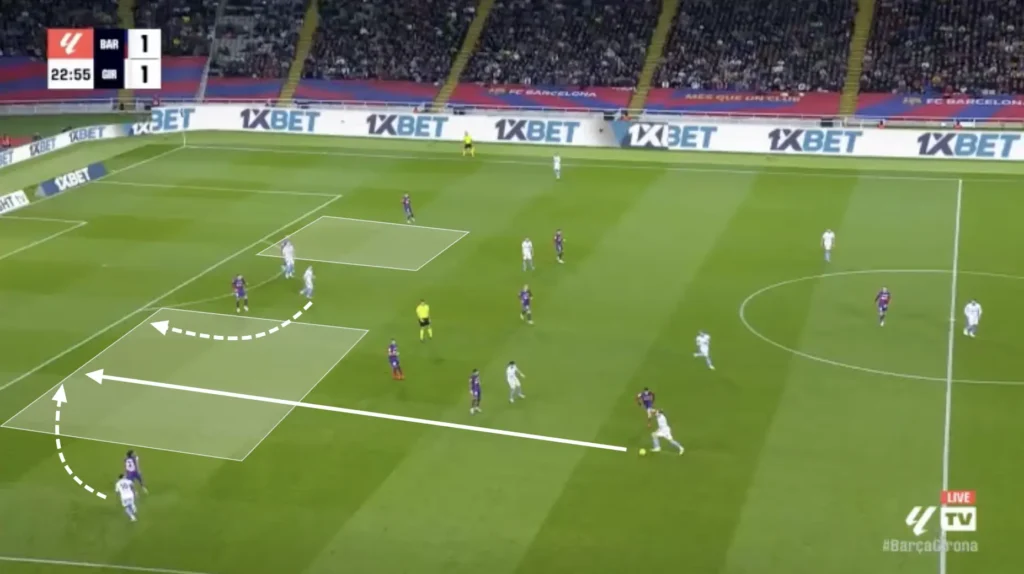
Principles and Tools
Girona always looks to play an attacking and offensive football, regardless of the opposition. They like keeping possession and are often successful in doing so. One influential principle in doing this is to be fluid within the system and to find different rotations. They do this both in the low and in the high build-up.
They can rotate in the midfield:
Here, finding the space by switching positions on the number-ten and the ball side number-eight.
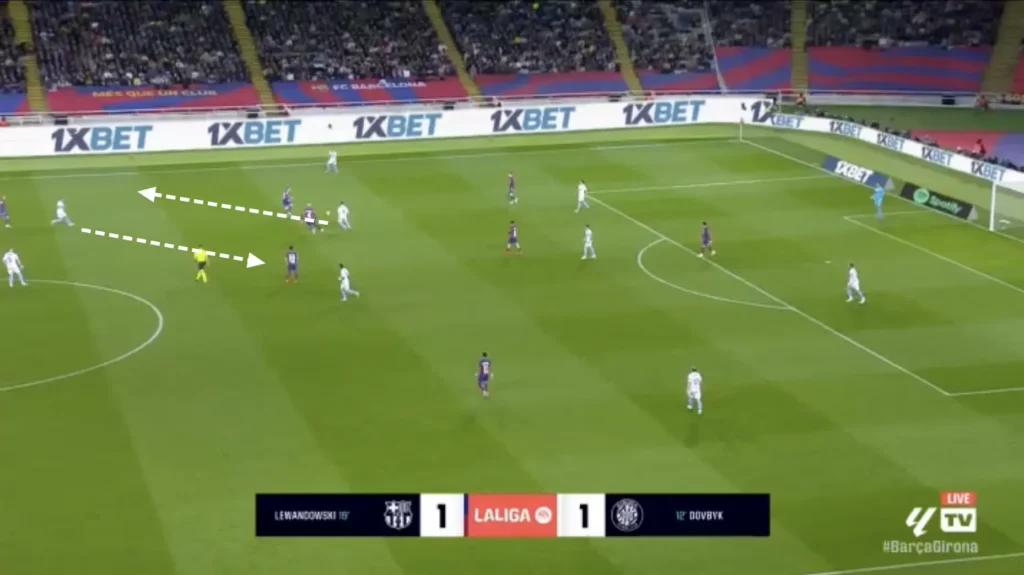
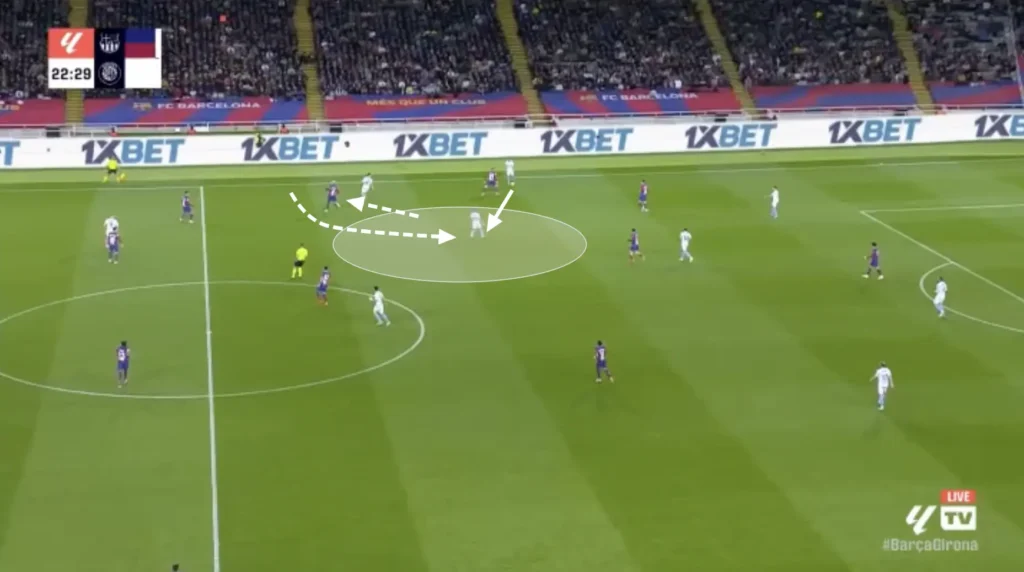
Here, finding the space by switching positions on the number-six and the ball side number-eight.
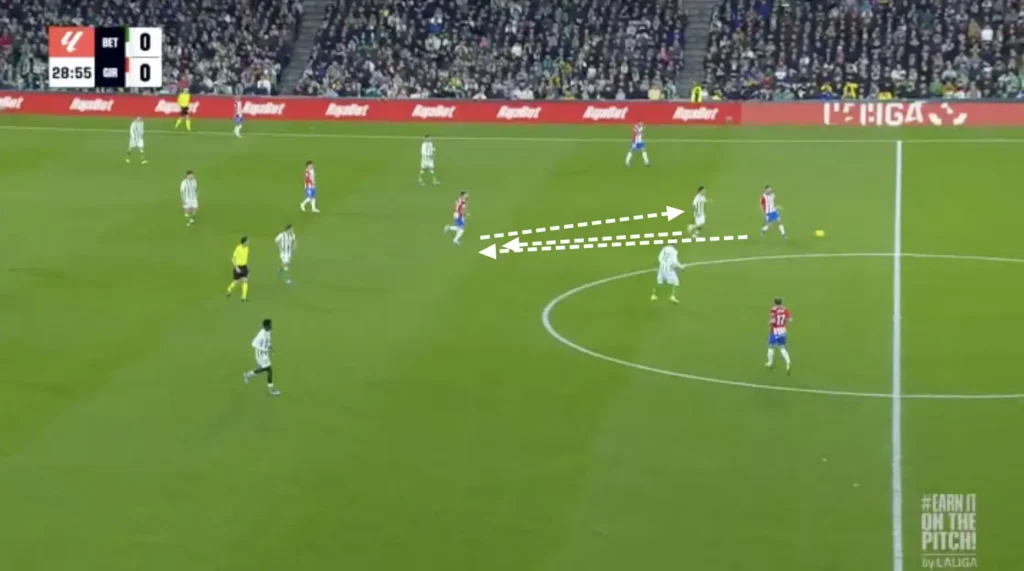
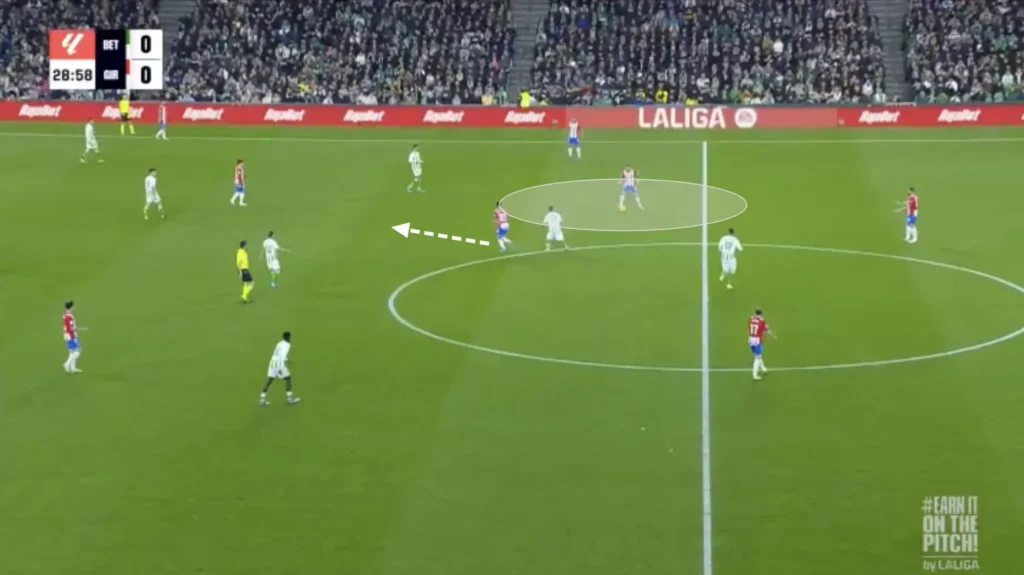
They can also rotate with the wingers and the midfielders:
Here, by switching positions, creating a 2v1 against the fullback.
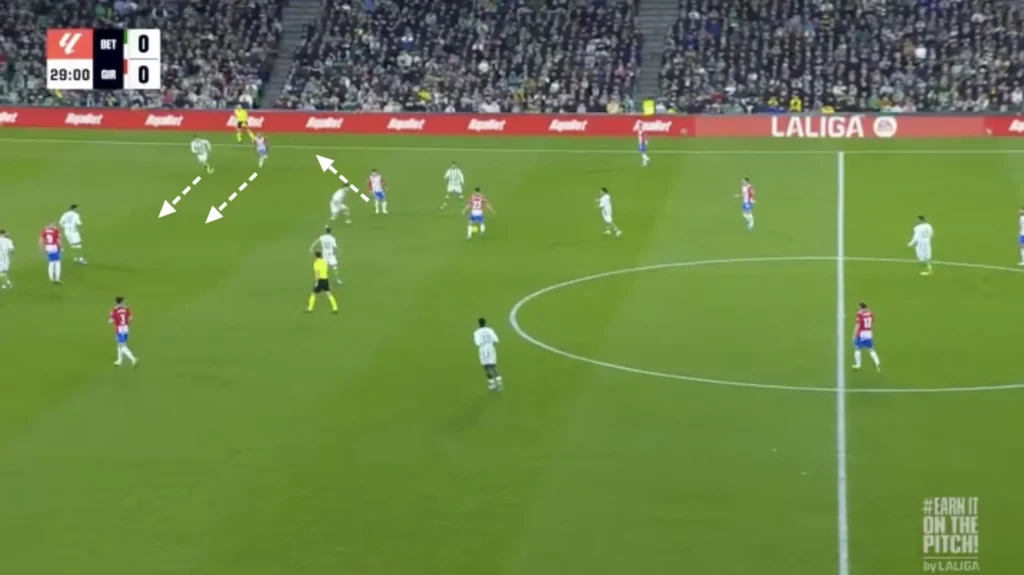
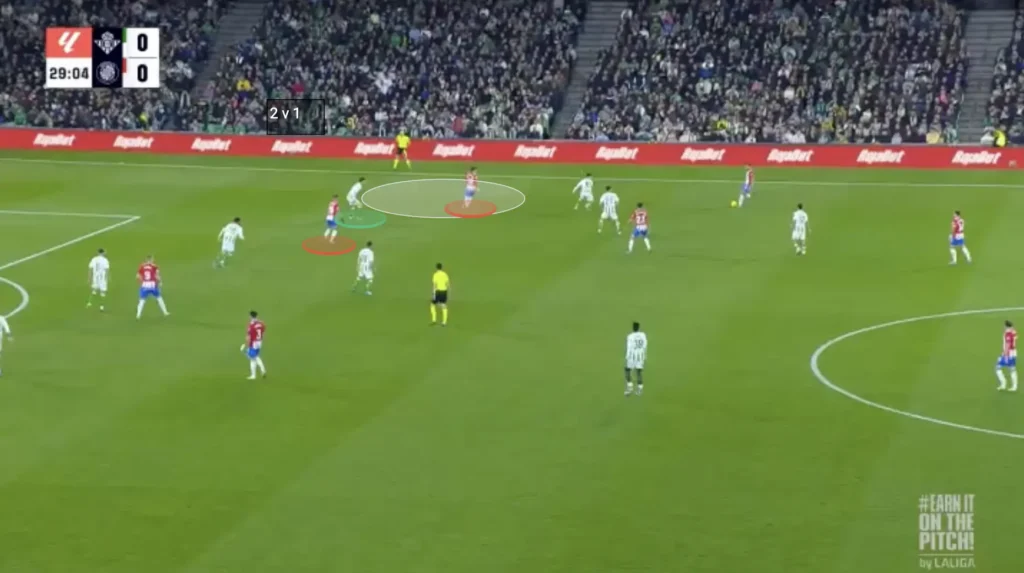
Defensive Transitions and Low Press
In the low press, Girona uses a 1-4-4-2 formation. They will sometimes set up in a low-block but look to be in more of a mid-block. When defending, Girona always tries to stay compact while closing the center, forcing the opposition out wide. They, therefore, play with a high backline, making the space to the midfield line as small as possible.
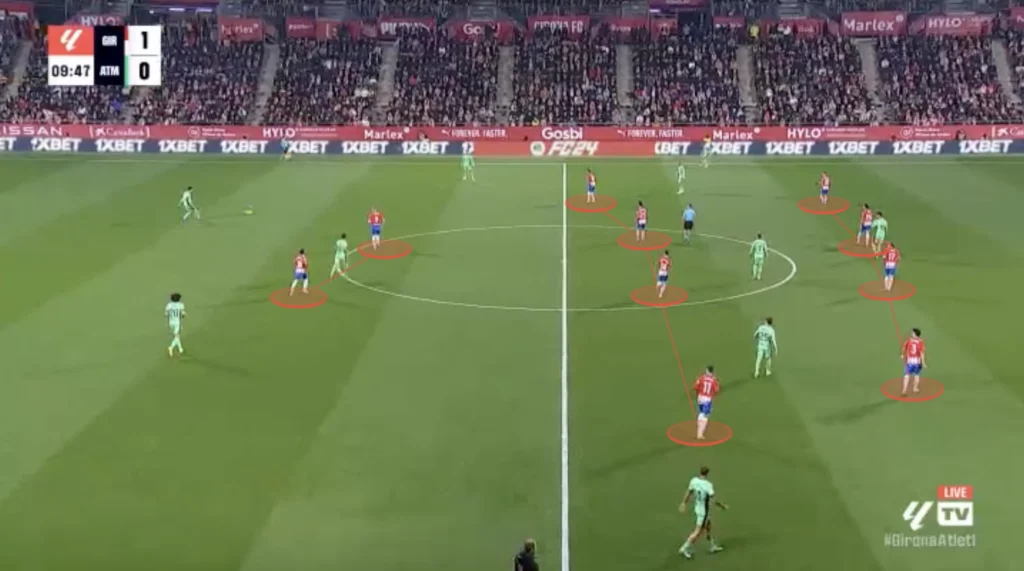
Positioning many players centrally, creating numerical advantages in the midfield, creates good conditions in defensive transitions. Many players close to the ball after losing possession means that many players can work towards regaining possession. This is another reason why Michel likes to have a lot of players in central positions.
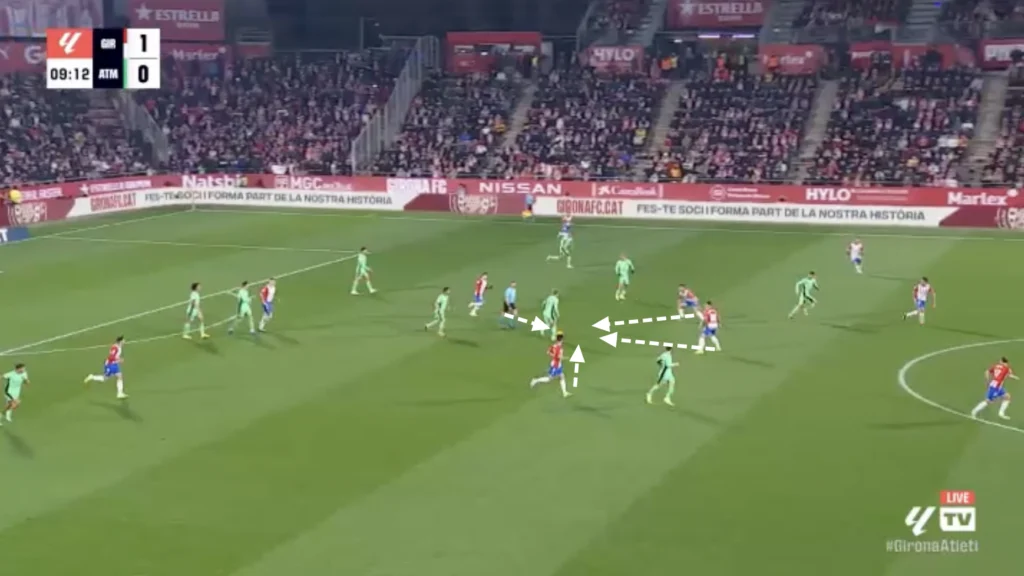
Weaknesses
Girona likes having a high backline when defending. This enables them to press the opposition while being compact, helping them to win the ball in many situations. The downside, however, is that it often leaves you open on through balls in behind. Moreover, the Girona backline sometimes is not as synced as it needs to be to successfully keep the high line. They do not always stay in the same line, and one player often drops too early.
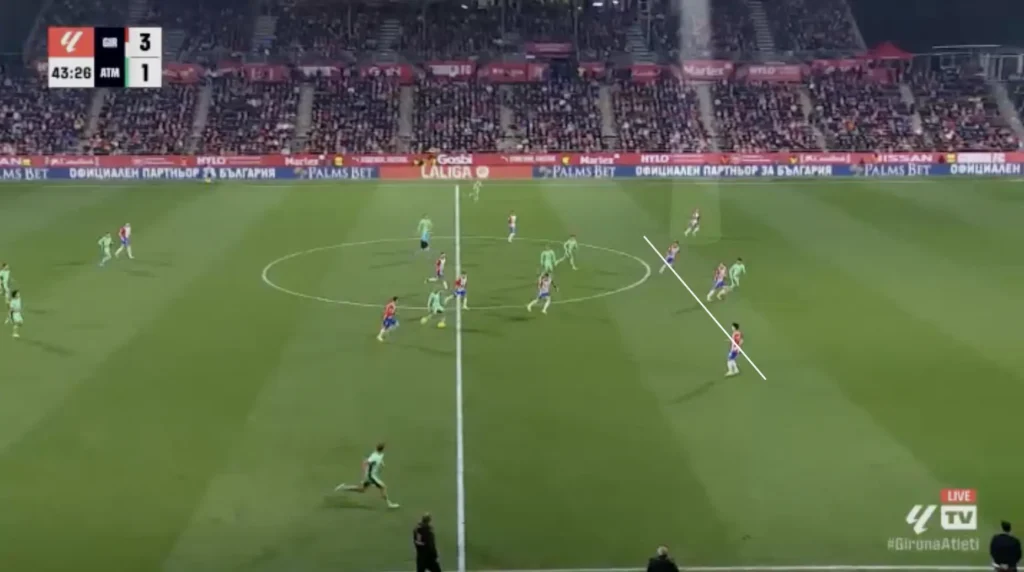
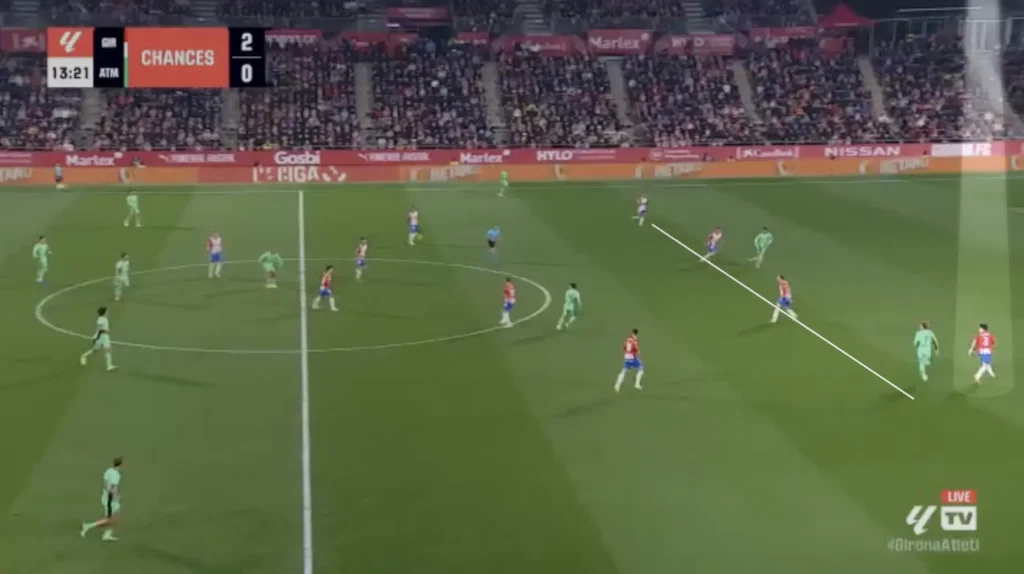
Another weakness of Michel’s Girona is that they sometimes are very open to counterattacks. Keeping players in central and offensive positions during the high build-up usually helps in the counterpress. If they, however, do not regain possession during the counter-pressing phase, they often open up opportunities for dangerous counterattacks.
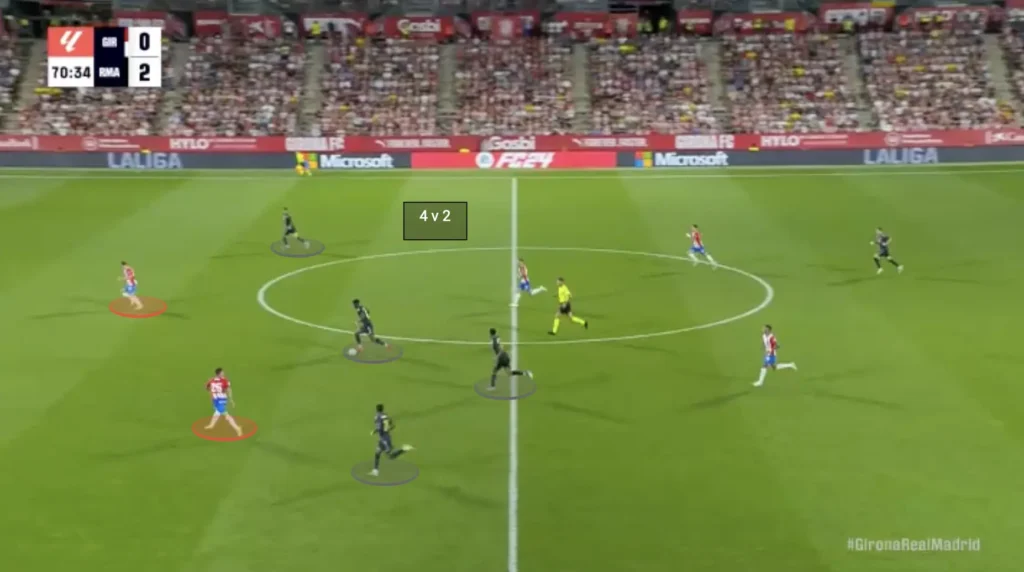
Final Thoughts
As we conclude our tactical exploration of Girona under the adept guidance of coach Michel, it becomes evident that the team’s success is deeply intertwined with a strategic and cohesive approach on the field. From meticulously designed formations to player movements, Michel’s imprint on Girona’s style is unmistakable. The tactical nuances uncovered in this analysis shed light on the team’s strengths and the coach’s influence in shaping a distinctive brand of football. Girona, under Michel’s tutelage, emerges not just as a football club but as a fascinating study of strategic brilliance and cohesive play.
